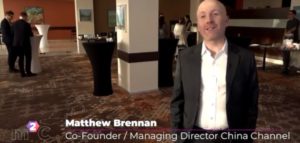
Fashion firm Shein belongs to a new breed of ultra-fast fashion brands that keeps an edge on its more traditional competitors, says innovation expert Matthew Brennan at the Vox. Why is Shein going to crunch fashion companies like Zara?
The Vox:
Toward the tail end of the 2010s, “ultra-fast” fashion brands — Asos, Boohoo, Fashion Nova, and now Shein — emerged as viable competitors to the dominant fashion empires of the previous decade. Last October, Reuters reported that investors think “Zara … is going to be crushed by fast fashion 2.0.” These ultra-fast fashion companies are able to reach millions of young shoppers directly through social media without the need for physical retail space, and relied on search traffic and customer data to foreshadow trends.
But by virtue of Shein’s location and software technology, the retailer developed a speedy edge on its competitors. Matthew Brennan, a Beijing-based writer and analyst of Chinese technology, likened its pace to “real-time” retail. That means Shein is constantly gathering and analyzing customer data and uses that knowledge to craft new designs — within as little as three days.
“Each new design is basically a bet because Shein can estimate how well a product is going to do, but it doesn’t know for sure until it sells,” Brennan explained. “Compared to its fast fashion competitors, Shein is able to take more bets, but at a lower risk. It’s able to place very small initial orders with these factories, about 100 or even smaller.” These batches were much smaller than Zara’s and that of ultra-fast fashion retailers like Boohoo, which reportedly ordered about 300 to 500 units per style. If a specific top goes viral overnight on TikTok, for example, Shein will be able to instantaneously ramp up production on the garment and place additional orders depending on demand.
Shein has spent years cultivating relationships with Chinese garment factories and manufacturers, whereas most Western brands generally outsource this work. Inditex is similarly situated close to a garment production center in the northeast region of Spain, but according to Brennan, business in China moves much faster.
“Shein doesn’t work with very large factories but [with] small to mid-sized workshops that pick up orders daily,” Brennan said. “It’s very much like an Uber system, where new orders are coming into factory owners’ phones and they receive the order. It’s very scrappy, but efficient.”
Matthew Brennan is a speaker at the China Speakers Bureau. Do you need him at your (online) meeting or conference? Do get in touch or fill in our speakers’ request form.
Are you looking for more innovation experts at the China Speakers Bureau? Do check out this list.
No comments:
Post a Comment